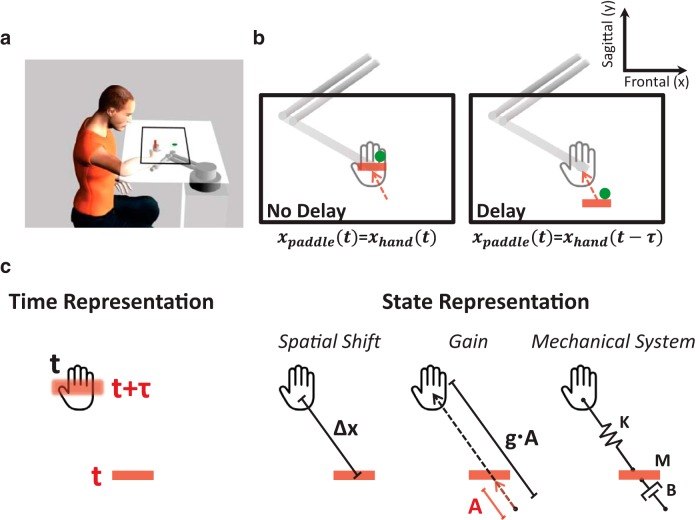Fig 1.
The pong game and the representation models for hand-paddle delay. a, An illustration of the experimental setup and the pong game: participants sat and held the handle of a robotic arm. A screen that was placed horizontally above their hand covered the hand and displayed the scene of the experiment. During the pong game, participants controlled the movement of the paddle (red bar) and were required to hit a moving ball (green dot) toward the upper wall of the pong arena, which is delineated by the black rectangle. b, The paddle movement was either concurrent (left – No Delay) or delayed (right – Delay) with respect to the hand movement (the red arrow indicates the paddle movement direction). c, Participants could represent the hand location based on the delayed paddle using a Time Representation (left) or a State Representation (right). In a Time Representation, participants were assumed to estimate the actual time lag, τ, and represented the hand location at time t as the location of the paddle at t + τ (blurred paddle). In a State Representation, participants would represent a Spatial Shift (Δx) between the hand and the paddle, an altered visuomotor Gain (g) relationship between hand and paddle movements, or a Mechanical System that connects the two and includes a spring (K), a mass (M), and a damper (B).

